Our editors independently research the best products online to produce this list. We may receive commission on purchases made from the links below but this will never affect our product choices.
Top 10 Best Cameras for Bird Photography
- Canon EOS 4000D (Editor’s Choice)
- Sony Alpha A7 III (Luxury Choice)
- Nikon Coolpix VNA951GA (Best Value)
- Kodak PIXPRO AZ401-BK (Best for Beginners)
- Sony Alpha 6400 (Best Mirrorless)
- Panasonic LUMIX DC-S5 S5 (Best for Professional Users)
- Sony DSC-WX500 (Best Compact)
- Nikon D3100 DSLR (Best for Amateurs)
- Panasonic LUMIX DC-FZ82EB-K (Best Bridge)
- Nikon D5600 VR (Best DSLR)
The best camera for bird photography and any other forms of wildlife photography will be equipped with several key features. Different kinds of specific camera technology, such as a good shutter speed, intelligent AF system, and other advanced camera settings, make capturing birds much more accessible. The proper collection of traits also seriously improves the image quality when filming and photographing moving targets like birds.
While this may sound a bit tricky or nuanced at first, finding a camera with the perfect combination of specifications can seriously pay off in the end. Whether you are new to bird photography or are a more experienced camera user, we have a variety of cameras on our top 10 list that are sure to exceed your expectations and take your skills as a photographer to the next level.
How We Compared Cameras for Bird Photography
To find the right cameras for bird photography we considered multiple factors, including:
- Camera style
- Zoom
- Low light performance
- Image stabilisation
- Autofocus system
- Shooting speed
Our experienced team created the following list after spending countless hours researching products and fact-checking customer reviews. We carefully chose a range of products suitable for every nature lover out there, analysing and assessing the comparison points above.
To know more about our review process, have a look here.
Camera for Bird Photography Reviews
Canon EOS 4000D (Editor’s Choice)
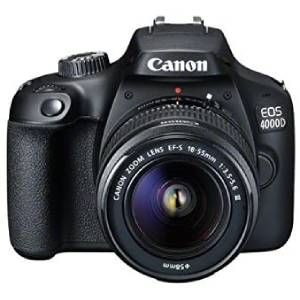
The Canon EOS 4000D comes as a kit that is fantastic for wildlife photography. This Canon camera could quite possibly be the best birding camera out there for beginner to intermediate level users, and the included EF-S 18-55 mm f/3.5-5.6 III Lens only makes this option that much more desirable.
Versatile shooting modes and top-quality images make the Canon EOS 4000D the perfect pair for your bird photography needs. You can achieve beautiful results and top-quality images with an 18-megapixel sensor, nine autofocus points, a 3 FPS continuous shooting speed, camera steady, and 1080p video recording.
This kit can produce photos and video recordings with background blur, plus a lot more. Use the Scene Intelligent Auto mode for a quick frame and shoot camera option. Or, for a guided live view, use Creative Auto mode. This kit also features inbuilt Wi-Fi and a quick setting menu so you can easily access all of your settings and transfer files as quickly as possible. Lastly, the Canon EOS is also lightweight and compact, so it shouldn’t weigh you down.
Potential cons for the Canon EOS include it possibly having a slightly slower focus and being constructed with a plastic body and mount. It may not be the best choice for more advanced wildlife photographers either, but it performs exceptionally well all-around.
Pros:
- Great for beginner photographers
- Wi-Fi connectivity
- Lightweight and compact
- Easy to use with quick settings menu
- Shoots photos and video with background blur
Cons:
- It could take longer to focus than expected
- The plastic mount and body could be less durable
- It might not be the best choice for advanced-level photographers
Sony Alpha A7 III (Luxury Choice)

Luxury quality and performance are what the Sony Alpha A7 III with 28-70 mm Lens Kit is all about. As a full-frame mirrorless camera, it can capture wide high, resolution shots at fast speeds.
Designed with a 24.2-megapixel full-frame sensor and a 10 FPS continuous shooting speed, this luxury camera is ideal for bird and other wildlife photography. It captures top quality images at rapid speeds so you can increase your odds of getting the perfect shot with trickier subjects like birds. The autofocus system is also versatile and accommodating. All of these specifications also lend a hand to this camera’s high-quality audio and superb video capability overall.
The Sony Alpha A7 III Mirrorless Digital Camera with a 28-70 mm Lens kit is conveniently compact and portable as well, so you can easily stash it while you are out searching for birds to film and photograph. An inbuilt headphone jack that functions as an adapter plus a charger rounds out this option’s stand out traits.
While we stand behind our decision to name this one of the best cameras for bird and wildlife photography, some users may find the menu settings to be somewhat less intuitive. In addition, it may not come with a power cord included, and it may not be capable of recording videos longer than 30 minutes.
Pros:
- Luxury quality and performance
- Superb video capability
- Compact and lightweight
- High shutter speed of 10 FPS
- 24-megapixel full-frame sensor
Cons:
- The menu settings may be less intuitive
- May not be able to record video longer than 30 minutes
- The power cord may not come included
Nikon Coolpix VNA951GA (Best Value)
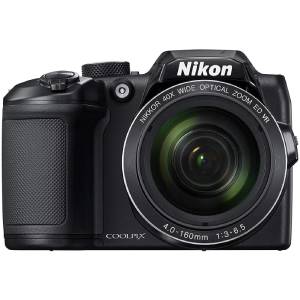
The best cameras don’t always have to be attached to luxury, and the Nikon Coolpix VNA951GA camera is proof of that. This small but mighty camera comes at an excellent value and still outperforms many competitors to be one of the best cameras for bird photography on the market today.
This Nikon camera was designed with an advanced autofocus system plus a contrast-detection mode to ensure you can capture a moving subject. Featuring a maximum aperture range of f/3-6.5, a 7.4 FPS continuous shooting speed, and a 16-megapixel low light sensor, wildlife photography is made simple and, of course, fun.
Image stabilisation helps you shoot clear and steady images even at this camera’s maximum 40x optical zoom or 80x dynamic fine zoom. As is typical with Nikon cameras, this model also features HD video plus advanced settings such as creative and portrait modes to round out its capabilities.
You should know that the Nikon Coolpix VNA951GA is a good camera overall, but it may not feature an electronic viewfinder or a manual setting option. It could also have a relatively short battery life even though it claims to have an extended one.
Pros:
- Excels in low light conditions
- Autofocus and contrast-detection modes with image stabilisation
- 40x optical zoom
- 1/1500 maximum shutter speed
- Excellent value option
Cons:
- It may lack an automatic viewfinder
- May lack a manual setting option
- It might have a shorter battery life
Kodak PIXPRO AZ401-BK (Best for Beginners)
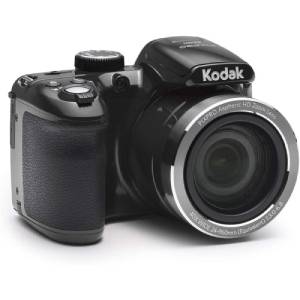
The Kodak PIXPRO AZ401-BK is one of the best cameras for beginner bird photographers. It is easy to use and contains helpful features to keep your wildlife photography journey headed in the right direction.
With a 16-megapixel sensor, you can count on high-resolution images from the Kodak PIXPRO AZ401-BK. This bridge camera contains optical image stabilisation, a 24 mm wide-angle lens, and a panorama shooting mode to help you get the most expansive shots possible.
The 40x optical zoom will also help you capture faraway subjects with ease. Bird photographers find this feature especially handy as their principal objects are often seen perched high up in trees or flying in the distance. Finally, a large and bright 3″ LCD screen will make viewing your images and spotting your subjects significantly easier.
Unfortunately, this camera may have a slightly lower 720p video resolution and restricted internal storage, so you will almost certainly want to buy an SD card to use along with it. Relatively speaking, it could have a somewhat shorter battery life, but this camera will knock it out of the park for a beginner.
Pros:
- 24 mm wide-angle lens
- 16 megapixels for high-resolution images
- Optical image stabilisation
- Great for beginner photographers and easy to use
- Large and bright 3″ LCD screen
Cons:
- It may facilitate a slightly lower 720p video resolution
- It could have a relatively shorter battery life
- It may come with minimal internal storage
Sony Alpha 6400 (Best Mirrorless)
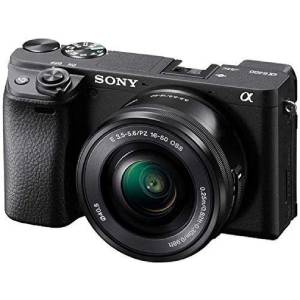
The fast shutter speeds and quiet functioning of mirrorless cameras make them excellent for wildlife photography. For these reasons and more, the Sony Alpha 6400 APS-C Mirrorless with Sony 16-50 mm f/3.5-5.6 Power Zoom Lens is a superior set of gear for bird photographers.
This mirrorless camera is constructed with a 24.2-megapixel APS-C frame sensor to help you capture high-quality images in all kinds of settings. It also can film full HD video and has a slow-motion setting to help you capture the minute details of birds while they are in flight.
For a compact camera, the Sony Alpha 6400 still has impressive features, including a flip screen and a self-timer. For the perfect focus every time, it is able to shoot 11 FPS and has an impressive 425 AF points based on contrast. The autofocus system also features subject tracking, real-time tracking, eye autofocus, and face detection for a comprehensive and reliable effect.
We think the menu system on this camera could be somewhat confusing at first, and the design may be less ergonomic, but with a bit of time, you should get the hang of all its valuable features. It could also have a slightly dimmer display screen, but overall, this camera makes an excellent choice for photographers of varying skill levels.
Pros:
- High resolution with 24.2 megapixels
- Flip screen and self-timer for selfies
- Real-time tracking and eye autofocus
- Full HD slow-motion video
- Fast 11 FPS AF system with 425 AF points
Cons:
- The menu system could be somewhat confusing
- The display screen might be a bit dim
- The design may be less ergonomic
Panasonic LUMIX DC-S5 S5 (Best for Professional Users)
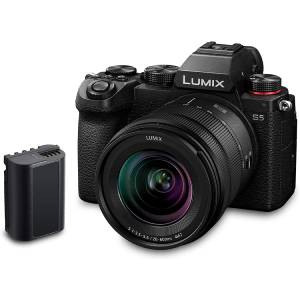
The Panasonic LUMIX DC-S5 S5 full-frame mirrorless camera makes a superb choice for professional level bird photography. Its overall quality and build are outstanding, and it features a series of advanced features that are essential for wildlife photography.
This camera’s specifications include a 20-60 mm lens, 24 megapixels full-frame CMOS sensor, and a 7 FPS electronic shutter speed. It also has an improved AF system with a dual image stabilisation system to help you achieve clear and crisp photographs and videos in various scenarios. We love that it also excels in low light conditions, which you know is excellent for bird photographers.
Another area this camera excels in is in shooting video. It features 2160p video resolution and has no limit on video recording time. It also is built with a great display with a flip screen for various angle filming and shooting. Even with all of the advanced features, this camera’s settings remain easy to navigate. Inbuilt Wi-Fi on this camera also means you can upload videos and photos anytime you like.
A compact and rugged design overall speaks to the longevity of this camera. It is also splash and dust resistant for enhanced protection from the elements. As a bonus, an additional battery pack also comes included.
The Panasonic LUMIX DC-S5 S5 full-frame mirrorless camera may not possess the same autofocus system as previous models, but it could still be somewhat lacking. In addition, the slow-motion video function may not produce the best quality videos, and you can expect longer charging times, but at least it comes with a backup.
Pros:
- Compact and rigid camera body
- Intuitive settings with a great display
- High quality 24 MP full-frame CMOS sensor
- Professional-grade video features
- In body and lens stabilisation for clear images
Cons:
- Longer charging times can be expected
- The autofocus system could be somewhat lacking
- The slow-motion video mode may not be the best quality
Sony DSC-WX500 (Best Compact)
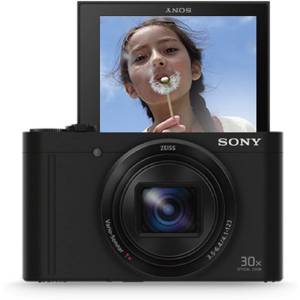
Often, bird photography and other types of wildlife photography require you to hike into the wilderness and having compact gear can help to make this more attainable. With this in mind, the Sony DSC-WX500 is our top pick for the best compact camera.
The Sony DSC-WX500 features an impressive 30x zoom with an 18.2-megapixel sensor for high-quality images and 1080p video. Equipped with a fast and intelligent autofocus system, image stabilisation, and a light metering mode for low light conditions, capturing stationary and moving birds becomes fun and accessible.
In addition to bird photography, this camera is also excellent for selfies. It is constructed with a 180-degree tilt screen and easily connects to your smartphone to establish remote control. It is also Wi-Fi enabled, so you will be able to upload your photos and videos without delay. Overall, this fantastic camera’s intuitive operation makes it easy to use and versatile.
We think the battery life on this camera could be improved, so make sure to carry extras along with you when you go out shooting. Additionally, it might not be ideal for more advanced or professional photographer use, and it may have a relatively shorter lifespan when compared to other top options on our list.
Pros:
- Features an ultra-compact camera body design
- The 18.2-megapixel sensor produces top-notch image quality
- 180-degree tilt screen for easy selfies
- Wi-Fi enables remote control operation
- A fast and intelligent autofocus system
Cons:
- It might not be ideal for advanced bird photography
- The battery life could be improved
- It may have a shorter lifespan overall
Nikon D3100 DSLR (Best for Amateurs)

The Nikon D3100 DSLR camera is a fantastic choice for amateur bird photographers. It isn’t overly complicated, has a helpful guide setting, and maintains excellent image quality in various scenarios.
Built into the features on this camera is a super handy guide mode that helps teach you how to use the camera and how to improve your ability to capture images and your photography skills as a whole.
With a 14.2-megapixel sensor, 11 AF points, image stabilisation, and face priority, this camera is able to produce excellent image quality all around. In fact, it can even perform subject tracking while in video mode, so you can easily capture birds in flight.
The Nikon D3100 DSLR is equipped with various versatile shooting modes that cater to different environments and low light conditions without hesitation. Its settings also include several post-processing editing tools so you can make touch-ups and correct issues immediately for easy transfer or upload.
Be aware that this camera has a 1.5x crop factor, so it may not be a good choice if you want a wider angle lens or a full-frame sensor. It could also have relatively short battery life and may not feature any internal storage, so you will be required to insert an SD card before you can take any photos or videos.
Pros:
- Excellent image stabilisation
- Helpful guide tutorial functions
- Easy and intuitive to use
- Subject tracking for video and photo
- Versatile shooting modes for better image quality
Cons:
- The 1.5x crop factor may limit the frame sensor size
- It could have a relatively short battery life
- It may not feature any internal storage
Panasonic LUMIX DC-FZ82EB-K (Best Bridge)
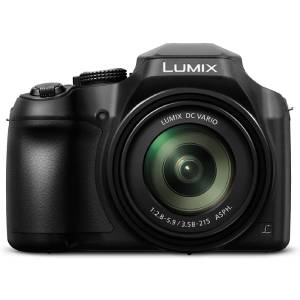
Bridge cameras are easy to use and great for various scenarios, so it is no surprise we chose the Panasonic LUMIX DC-FZ82EB-K as one of the best cameras for bird photography. It has lots of internal storage space and is packed with quite a bit of zoom, both key traits for wildlife photography.
This bridge camera features a 20 mm ultra-wide-angle lens with a 60x optical zoom. These specifications enable you to track and photograph a large area from a great distance. For wildlife photography, this can make the difference between being able to capture your subject or not.
Conveniently, this Panasonic LUMIX DC-FZ82EB-K camera contains a Post Focus feature with focus stacking for multiple autofocus points in one image. While taking a perfectly focused photo is ideal, the Post Focus allows you to bring a blurry image into focus after the fact. This can be pretty handy when photographing birds in flight.
While this isn’t specifically a video camera, it boasts a 2160p video capture resolution which allows you to shoot video on an advanced level. The touchscreen display and excellent battery life also support shooting videos and easier access to the camera’s settings.
With the Panasonic LUMIX DC-FZ82EB-K, camera images could become grainy at max zoom, and it is possible the connectivity could be somewhat lacking. Also, its low light performance could be somewhat lacking.
Pros:
- 20 mm ultra-wide-angle lens
- 60x optical zoom
- Top-quality 2160p video capture resolution
- Post Focus feature with multiple autofocus points
- Excellent battery life
Cons:
- Images could become grainy at max zoom
- It might not be the best in low light conditions
- Connectivity could be somewhat lacking
Nikon D5600 VR (Best DSLR)
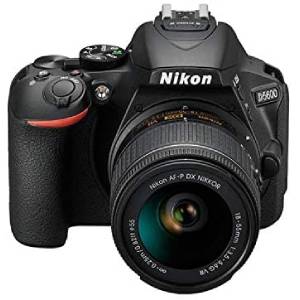
If you are looking for an entry-level DSLR camera for bird photography, the Nikon D5600 should be strongly considered. As our top pick for the best DSLR camera, it makes an excellent selection for beginner to intermediate wildlife photography.
The Nikon D5600 VR DSLR Camera features a 24.2-megapixel optical image sensor resolution and a 60 FPS electronic shutter speed. Paired with the DSLR design, which facilitates a real-time display of images, you can expect to get top quality photos at speeds fast enough for bird watching cameras. The 3x optical zoom also helps you to take a shoot on faraway subjects.
As a bonus, this point-and-shoot camera comes with a SanDisk Extreme Pro 32 GB memory card that you can start taking photos and shooting video straight out of the box. Thanks to a large display screen and a lightweight design, it is also easy to use, even for beginners.
You should know that this may not be a full-frame sensor camera, and we think it could benefit from coming with a more detailed instruction manual. In addition, it might not live up to the expectations of a professional photographer, but for most, it should not disappoint.
Pros:
- Lightweight and easy to use camera body
- Fast 60 FPS electronic shutter speed
- It comes with a SanDisk Extreme Pro 32 GB memory card included
- Top-quality 24.2-megapixel optical sensor resolution
- Large display screen
Cons:
- It might not live up to the expectations of a professional photographer
- May not be a full-frame sensor camera
- It could come with a more elaborate instruction manual
Best Cameras for Bird Photography: A Buyer’s Guide
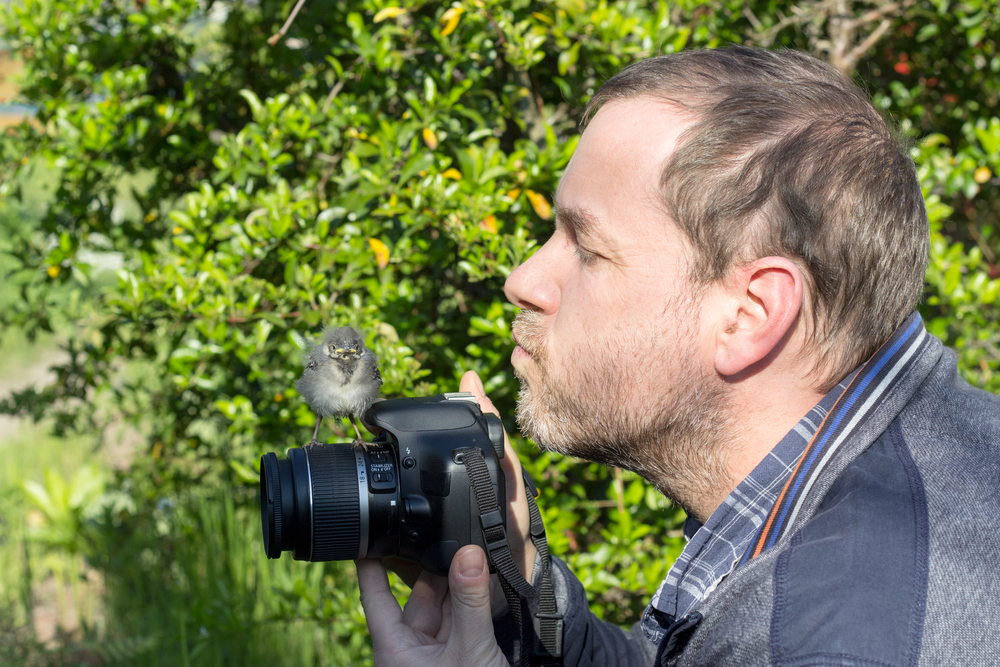
If you have any lingering questions pertaining to the best camera for bird photography and the value of particular traits, the following sections were designed just for you.
Even if you think you already know which camera you will be selecting, the topics discussed below will help give you some more insight. And they also will further explain complex camera concepts in greater detail, which will come in handy when you start filming and shooting.
How Many Megapixels Do I Need for Bird Photography?
As far as megapixels are concerned, the more, the better. A greater number of megapixels equals higher resolution photos. This often results in better image quality overall, even if you don’t really know how to use your camera to the best of its ability.
Crop Sensor or Full-Frame Cameras?
Whether you choose a crop sensor or a full-frame camera depends mainly on your preference regarding the initial size of an image. With full-frame cameras, you are able to capture a much wider image giving you a better chance of catching a moving target, like a bird. A full-frame sensor also allows you to crop the image after so you have a more extensive field of view to begin. With a crop sensor camera, you start with a smaller image, but some photographers do not mind, especially if they are looking for an option that comes at a better value.
What to Look For in a Camera for Bird Photography
It is best if bird and wildlife photographers seek out a few specific traits to maximise their camera’s potential when it comes to capturing video and images of their intended subjects. Look for the following characteristics to ensure you have a camera that is well equipped for the job.
Camera Style: Bridge, DSLR, or Mirrorless?
Each of the main types of cameras comes with its own set of advantages, some of which are better for bird photography than others.
Bridge Cameras
Generally speaking, a bridge camera will have a good zoom, lots of internal space, and be suitable for various scenarios. Bridge cameras also tend to be easy to use, making them an excellent choice for beginner bird photographers.
DSLR Cameras
DSLR cameras house a mirror that projects your image onto the viewfinder in real-time. This results in the absence of lag time between the lens and the viewfinder, which can be extremely useful for fast-moving birds. DSLR cameras also tend to have advanced features that more professional users are drawn to.
Mirrorless Cameras
A mirrorless camera can be good for bird photography because they typically have fast shutter speeds and operate without making too much noise. This allows you to capture a series of images quickly and also minimises the chances that you will startle and scare away your subjects.
Zoom
When photographing birds, you may not be able to get very close to them. For this reason, zoom can also play a role in what makes the best camera. Many cameras come equipped with a specific level of zoom, but this can often be increased with the addition of zoom lenses. As a wildlife photographer, it may be best to include super-telephoto lenses in your kit, but this is not necessary at first.
Low Light Performance
Low light performance is also essential to a wildlife photographer. Even if low light photography isn’t your main objective, many common birds are more active at dusk and dawn, making it a better time to shoot and film them. Look for a wider lens, also called a greater aperture, to get better low light performance from a camera. The aperture of a lens is its diameter measured in mm.
Autofocus System
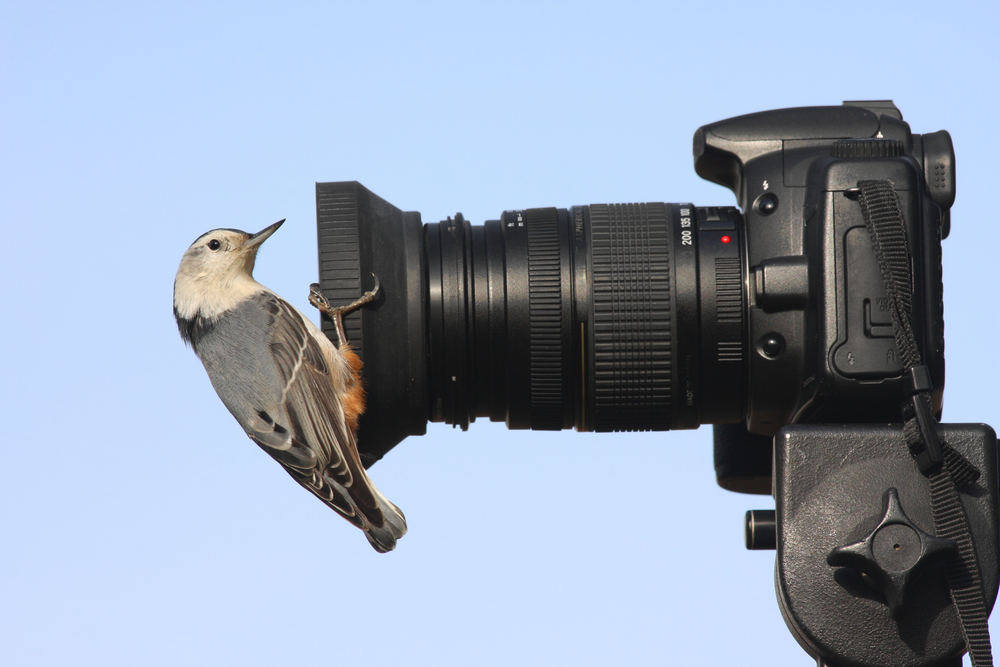
An advanced autofocus system is essential for bird photography. It is unlikely that you will have time to manually adjust or wait for an autofocus system to catch up to stationary or moving birds, as they typically do not stay in one position for long. The addition of an auto shutter speed sensor also helps the camera automatically adjust to the lighting while you track a bird. Look for quality autofocus with multiple AF points, and capturing images will be much easier.
Image Stabilisation
Even with autofocus, an image stabilisation system in a camera helps to reduce wobble and increase the clarity of your photos overall. If you don’t use a tripod, this can actually make a huge difference in your ability to capture steady images. Steady issues are exacerbated when you zoom in, so look for a camera with a proper image stabilisation system to get the best results.
Shooting Speed
As you probably already know, wildlife photographers also want to prioritise a fast shutter speed in their cameras. The faster the shutter or shooting speed, the more pictures you can take in a shorter amount of time. Even if many of the images are unusable, a faster, continuous shooting speed can be a huge asset.
The Right Birding Camera for You
Capturing birds and achieving the perfect shot is significantly more accessible with the right gear. We think the best camera for bird photography is the Canon EOS 4000D with EF-S 18-55 mm f/3.5-5.6 III Lens. This kit is great for beginner to intermediate photographers and is easy to use with its quick settings menu. Overall, it is lightweight and compact and capable of several advanced settings, including shooting photos and video with background blur. It features Wi-Fi connectivity, an 18-megapixel sensor, nine autofocus points, a 3 FPS continuous shooting speed, camera steady, and 1080p video recording.
Although, the Canon EOS could take longer to focus than expected, and the plastic mount and body could be less durable. It might not be the best choice for advanced-level photographers either, but all in all, most bird photographers will not be disappointed with this option.
If the Canon EOS is not suitable for you, look to one of the other fantastic selections on our list, and you will be taking advanced level photographs and videos of birds in no time.
Let us know what you think in the comments below.
Additional Resources
Sam loves to learn about animals and their habitats. He has been a nature lover from a very young age, and has been writing papers and articles about wildlife for as long as he can remember.
